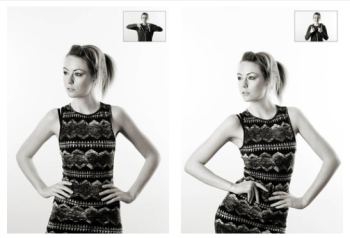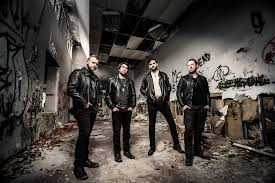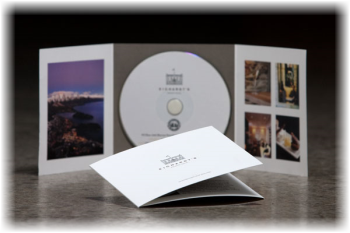602-904-5554 | Email Us | Shopping Cart

Photographing a headshot can seem like a daunting prospect. To have one person in front of your camera, looking to you for direction and positivity, is an intense environment. People are generally very critical of themselves in photographs, and feel very nervous. However, there are some simple things that you can do to make it a lot easier for everyone.
1. Have a pre-session consultation
Before your session make sure you know how the images will be used and what style they would like. This can be on the phone or face to face. Talking to them, will help them relax so much more than email. This will allow you to help them prepare for the session. Make sure they know what to expect, and are as relaxed as possible.
Find out about what profession your subject is involved in; a corporate lawyer may well opt for a clean white background look (above), while a more relaxed style of business (yoga instructor) may prefer a more colourful, environmental image (below). Find out in the consultation what they want so you are prepared on the day.
2. Help them to choose the right clothes
Generally speaking, solid, neutral colours, work best for headshots, as you want to avoid anything that distracts away from people’s faces. If it is a formal style you are looking to achieve, make sure that everyone gets the message, and remembers to bring formal work clothes with them. Men often forget their jackets, so for a consistent look, try and have a spare one on hand, even if you need to clip it at the back. If you have time with a person, get them to bring a few items of clothing. Remind them to iron their clothes as well.
3. Create separation from the background
Make sure that your subject doesn’t stand too close to the background. If you are using a studio background (or wall in an office) and you stand someone close to it, you may see shadows on the wall, which makes the images look less professional. For environmental headshots outdoors, I still recommend separation from the background. The bokeh creates a nice nondescript background, especially when shot at a wide aperture. Typically I aim for an aperture of f/4 for environmental and natural light sessions, and f/8 for studio style sessions with lights.
4. Starting the session
Whether you are photographing headshots for a single person, or a whole team, make sure you have a general chat with each person first, to help them relax. This can be just a 10 second, confident handshake, and a “how are you?”. People generally feel very tense about having their photograph taken, and talking about something in their comfort zone (where they live, if they have children or pets, etc) will really help them appear and be more comfortable.
5. Silly Faces!
A great way of helping people to relax in front of the camera, if you don’t have much time with them, is to ask them to pull a funny face for the first frame. Use this as a lighting test for a new person as well. This is great at breaking the ice, and very few refuse to do it. Once they have pulled a daft face, everything else is easy!

Marketing yourself as a model is a business all on its own and some people even hire marketing agents and professionals to promote themselves. If you have a good agent, this is what they are paid to do for you and you should be able to get by with just having your name on their books. Sometimes however if you want to make your own career and speed things up a bit, you can also find ways to market yourself that will not interfere with your agents rules and policies. Once you have joined an agency, you cannot join another one.
One of the first and most successful ways in this modern age is to find options on the Internet. These should be free ways to create awareness and give yourself more exposure. You can create a social networking page such as that on Facebook where you can upload your portfolio images and promote your services. Join as many groups as you can and even make a YouTube video for people to enjoy.
You can also find plenty of listing websites where you can list your services, photo and details for free to potential advertisers, designers and other industry professionals. There are specific websites like StarNow that offer this kind of service as well as job opportunities to models, actors, dancers and singers only.
Marketing can also come in the form of getting interviewed on radio or TV or for magazines. Here you can really get a lot of exposure and people will remember your name. You can also participate in various events that will get people’s attention. If you are still looking to get the attention of designers and branding companies then why not get a job as a waiter at one of the corporate functions or fashion weeks. Your agent can find out the details of all the industry events and functions that you can offer your services for.
{youtube}60Phm6tX2jo{/youtube}
Learn How to Promote Your Music. 4 Steps for Independent Music Artists on How to Promote Your Music Successfully. There are many tips, but these are 4 effective and inexpensive ways for independent and artists with little budget.
1. Let Your Fans pick Your SINGLE
2. Distribute Your Single on Streaming Sites, iTunes, Apple, etc
3. Run Facebook Ads in Your Area & Target certain Listeners
4. Create Your Story and Push on Blogs

If you’re a singer, musician, or in a band, educating yourself about the music business and music marketing is so important. Marketing presides over all promotional activities your band does and is second only to the music you create. In this post I will give you a top down overview of music marketing, and give practical tips to help your band grow beyond your local scene or social media followers.
How Do Record Companies And Artist Managers Market Bands?
I’ll admit, when I was musician and even when I was beginning my music business career, I had the wrong idea about music marketing. I often confused marketing with promotion or the day to day activity of publicizing a band. And after working with hundreds of artists as the GM and Head of Sales of Fearless Records for 13 years, and at Sony it became clear to me. I learned that marketing begins with the brand you create. Get to the root of what you are really about, and then convey that to your “market”. Consequently, great bands understand why they do what they do and know how they want to be perceived. These are for you and your bandmates to decide, and with the tips below you’ll be able to get started right now.
What Exactly is Marketing?
The best definition of marketing I have come across is “marketing is a battle of perception, not products.” – source: Al Ries and Jack Trout’s book the “22 Immutable Laws of Marketing”. It means you need to be first in the mind of your scene and the leader. This is key to the name behind this website and the concept of “heat on the street”. Strive to be the “first in mind” in your genre and let that perception spread like fire.
There is a great quote from Daniel Glass proprietor of Glassnote Records (Mumford & Sons, Phoenix, The Temper Trap) talking about the Mumford & Sons marketing plan.
“There was one line in the marketing plan. Get people to see them live. That was it” – Daniel Glass on the Music Business Worldwide Podcast
I love this quote because when you’re struggling it reminds you that you have to start with the core of your brand and “why” people should care.
Read more: 2018 Music Marketing Advice and Excersizes For Bands

Dear (new’ish) Model,
My name is Other Model. I have spent the last couple of years finding out a few things that I wish I’d known from the start. Please don’t think I’m patronising as I mean this only in goodwill, as there is absolutely no gain for me by sharing these cheats. Not all of my points will be valid for you as posing varies in each genre. Just take what you can and ignore the rest. If only one suggestion helps your future career then my time has been well spent…
Rule one, the mirror is your BFF. Stand there, perfect your poses and learn how your body shapes. The mirror is a perfect tool to show you what the camera can see – try to imagine it behind your photographers head when shooting and always consider what can be seen from that angle. For example, if your foot is closest to the lens, it is worth remembering that your foot is going to the largest thing in the picture….and nobody wants to be remembered as Bigfoot…
Read more: Dear Model: Posing Tips for How to Look Your Best in Photographs

You want to take great band photos, don’t you? Not just ones where everyone’s in focus and the bassist remembered to wipe the stalactite of spit from his upper lip?
Yeah, of course you do. We all do — especially when the difference between your music getting ignored and getting big exposure in the press often comes down to one thing: having great band photos.
But in order to get that great shot you’re going to need the right clothes, the right setting, the right lighting, the right expression at the right moment, and the right photographer to catch it all in one instant. For many of us, that’s already a tall order. Now consider this: a single band photo is not enough.

As creative and expressive musical artists, we’d like to believe our music speaks for itself. It does, of course, but a well-crafted artist bio is still a necessary part of your press kit and promotional efforts. In addition to giving the reader a glimpse into your musical career/journey/accomplishments to date, an engagingly written band bio can increase the chances of your music getting heard, whether you’re approaching music journalists for press coverage, creating an electronic press kit, or just trying to draw in casual visitors to your website.
It’s no easy task to create a song that speaks to a wide audience and carries your unique fingerprint – and crafting a compelling and accessible artist bio can prove just as daunting. To help shed light on how to create a stellar band bio, I sought advice from Cary Baker, founder of the Los Angeles music publicity firm Conqueroo. Prior to starting Conqueroo, Baker served as VP of Publicity for Capitol Records, I.R.S. Records, and other labels – and before that, he worked as a music journalist for publications like Billboard, Mix, and Creem.
Read more: Press Kit Fundamentals – How To Write A Compelling Artist Bio

Even if you’re relatively new to the musician world, you’ve probably heard the term “press kit” thrown around quite a few times by now. A press kit is a package of materials that you might send to record labels, media outlets, venues, etc. that contains all of the pertinent information about your band. But what does that mean exactly? What is and isn’t relevant information?
You’ll want your press kit to follow some basic standards if industry people are going to look at it. Here are a few tips and essentials on putting together the ultimate press kit.
Band Photo
The first thing in your press kit should be a hi-resolution photo of the band (or yourself if you’re a solo artist.) This can be black and white or full color. There aren’t a whole lot of rules when it comes to taking a great band photo (although you might want to stay away from some common clichés such as railroad tracks and brick walls). But you should definitely make sure of at least two things: everyone’s face should be easily seen in the picture, and the band’s “image” should be on display. If you play dark metal music, it might not suit your image to be wearing bright colors and lying in a field of flowers. If you’re an upbeat pop band, it might not fit to be wearing all black and looking dreary. Let your band’s character shine through!
More Articles …
Page 1 of 4
